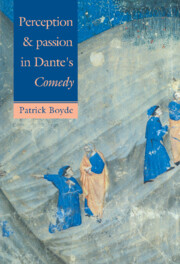Book contents
- Frontmatter
- Contents
- Preface
- PART ONE Coming to terms with Aristotle
- 1 The prestige and unity of the Aristotelian corpus
- 2 Movement and change in lifeless bodies
- 3 Self-change: growth and reproduction in plant life
- 4 Self-movement: sensation and locomotion in animal life
- PART TWO The operations of the sensitive soul in man
- PART THREE The operations of the rational soul
- PART FOUR Combined operations
- Notes
- Select bibliography
- Index of Latin terms
- Index of longer quotations
- General index
4 - Self-movement: sensation and locomotion in animal life
Published online by Cambridge University Press: 14 October 2009
- Frontmatter
- Contents
- Preface
- PART ONE Coming to terms with Aristotle
- 1 The prestige and unity of the Aristotelian corpus
- 2 Movement and change in lifeless bodies
- 3 Self-change: growth and reproduction in plant life
- 4 Self-movement: sensation and locomotion in animal life
- PART TWO The operations of the sensitive soul in man
- PART THREE The operations of the rational soul
- PART FOUR Combined operations
- Notes
- Select bibliography
- Index of Latin terms
- Index of longer quotations
- General index
Summary
Anima sensitiva
Let the scene be set in springtime on a hill in medieval Tuscany. A lamb enters and makes its tentative way to a clump of particularly succulent grass. It has scarcely begun to nibble the tips, however, when it is surprised by a young wolf and scampers away with its attacker in hot but in expert pursuit. The shepherd boy drops his piece of bread and cheese, springs to his feet shouting ‘Wolf, wolf’, and hurls a stone from his sling in the direction of the wolf, who abandons the chase and lopes away.
There are four ‘bodies’ in this Aristotelian pastoral – boy, wolf, lamb and grass – and all of them are ‘animate’. In their different ways, moreover, they are all actively engaged in taking or procuring the food that is necessary to preserve their ‘being’ and to enable them to ‘grow’ to maturity so that they may begin the task of ‘self-reproduction’ (food being ‘good’ as a ‘means’ to the ‘end’ of continued existence, which is assumed to be good both ‘in itself’, ‘for its own sake’, and also as a means to the end of the higher good of reproduction, which ensures the continued existence of the ‘species’).
The clump of grass, however, does not need to do anything further to ‘save its soul’ and ‘fulfil its potential’; and, since capacities are always determined by needs, it cannot perform any ‘task’ beyond these ‘operations of the vegetative soul’, nutrimentum, augmentum and generatio.
- Type
- Chapter
- Information
- Perception and Passion in Dante's Comedy , pp. 44 - 58Publisher: Cambridge University PressPrint publication year: 1993



